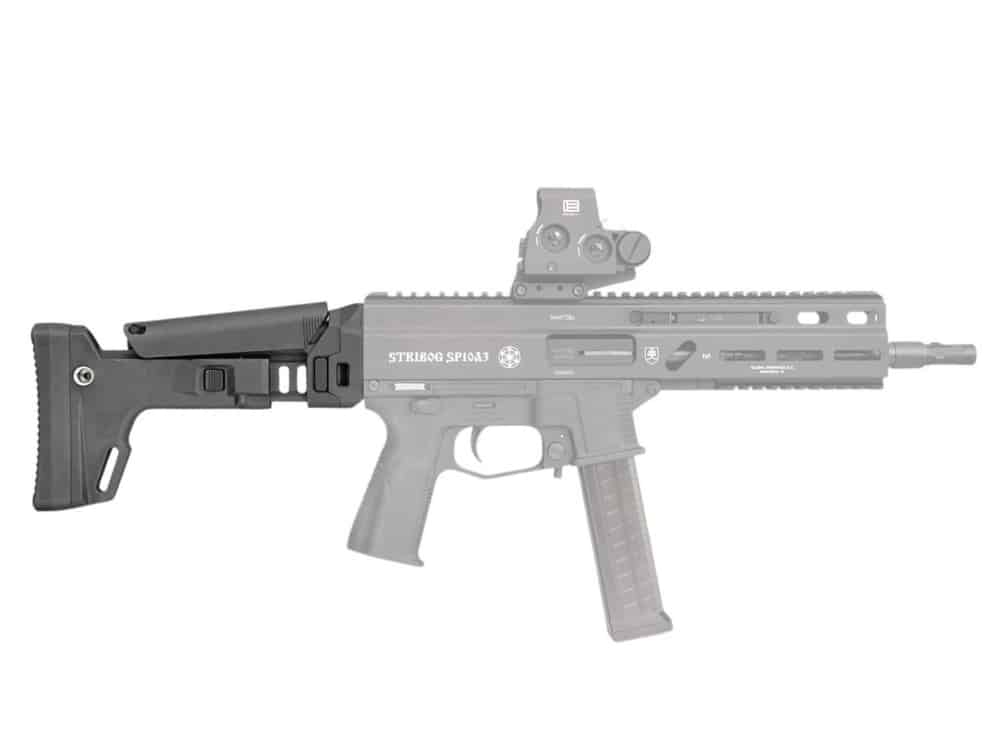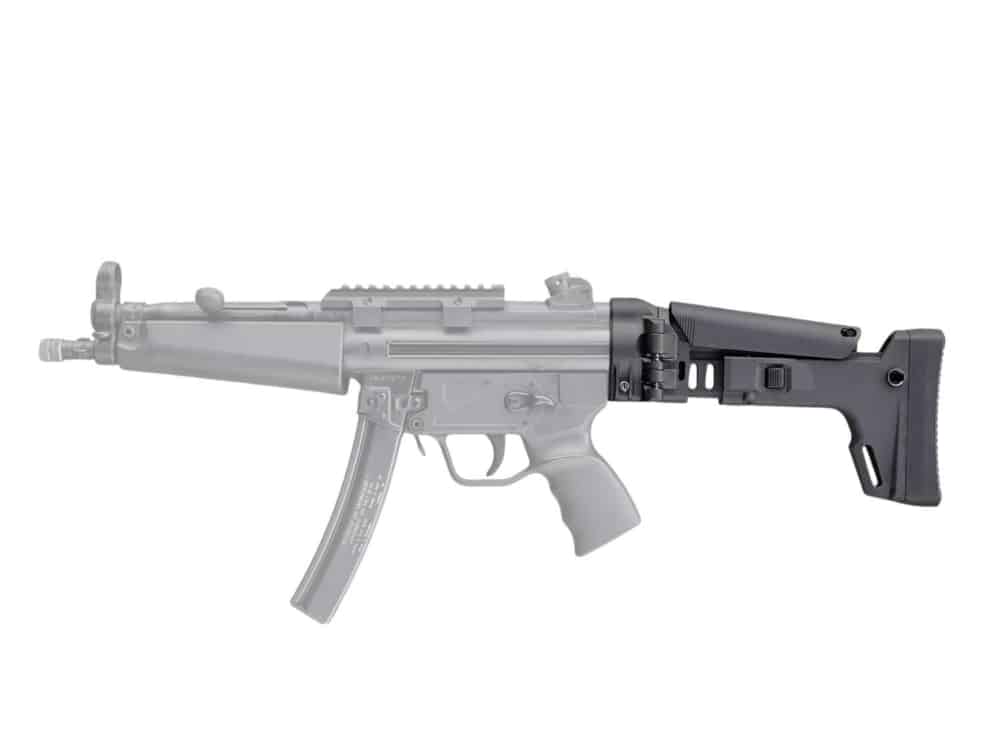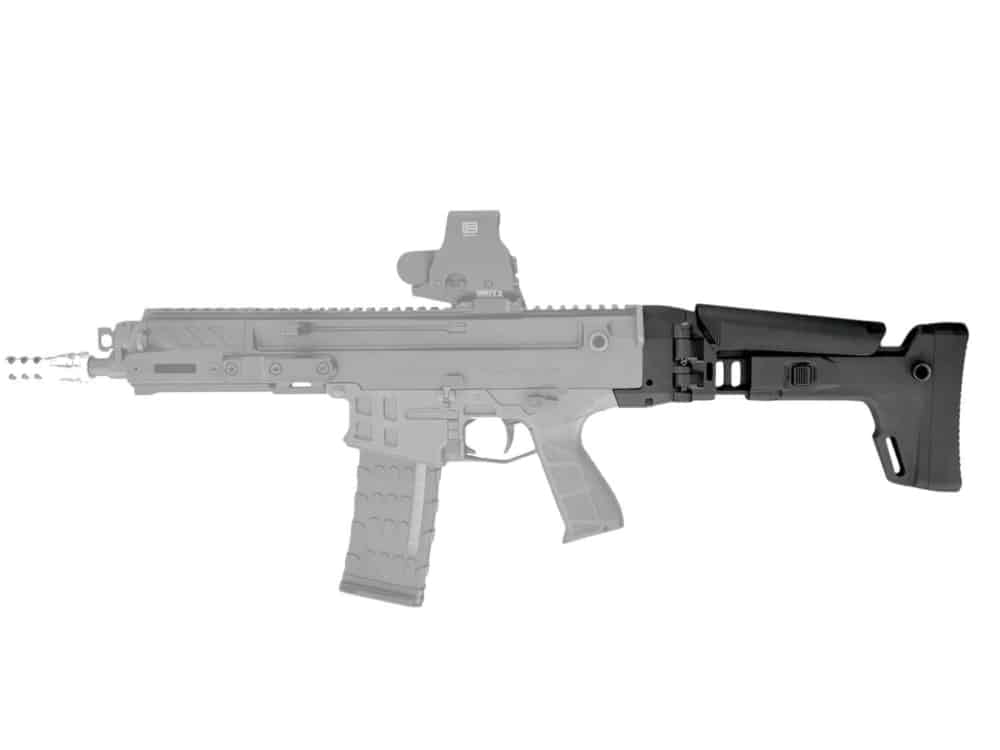The Future of the Pistol Brace
As we discussed in our previous blog, the heated discussions on pistol braces started AND ended (for now) all over again in December 2020, when the ATF published in the federal register, “Objective Factors for Classifying Weapons with Stabilizing Braces.” While the ATF is yet to outline new and contradictory regulations for its June 7 release, let’s take a look at what the near future holds for pistol stabilizing braces.
We at F5 want to make it clear that this analysis on the future of pistol braces is purely speculation based on past and current ATF regulation and how those affect you as a consumer. These are based on information available to the public and are purely a possibility based on F5 MFG’s experience in the firearms industry.
On December 18, 2020, the ATF stated all the objective factors it considers when evaluating firearms with an attached stabilizing brace to analyze whether these firearms qualify under the National Firearms Act or the Gun Control Act.
The ATF, however, continues to change their stance on stabilizing braces ever since its invention and approval by the ATF itself. Here’s a look at the timeline of how ATF continues to change its stance.
- In 2012, the ATF approved the stabilizing brace invented by Alex Bosco to use on AR 15 pistols.
- In 2015, the ATF disavowed the approval citing that the stabilizing brace, when shouldered, changes the intended use of the firearm, turning the brace into the stock.
- In 2017, the ATF reversed the 2015 regulation, commenting that the brace, shouldered or not, is not a buttstock and doesn’t come under the SBR category.
- In 2020, ATF again stated the objective factors that classify a braced firearm into the SBR category but failed in doing so, subject to the massive backlash from the firearm community.
- April 8, 2021, President Biden announced executive actions his administration will be taking to curb gun violence. Redefining pistol braces was included in these initiatives.
Leaked regs, “rough drafts”, and the braces future
- ‘Ghost Gun’ regulation leak.
On April 21, 2021, 16 days before the “Ghost Gun” regulations were to be released, a “draft” of the proposed ATF rules was leaked. There was good evidence to suggest that this was the final version of the regulations. This ‘draft’ had few changes for the final May 7 release, bringing us to the possible conclusion that these regulations were initially written inside the ATF. Since the drafts showed little review, it can be concluded that these regulations did not have an external review. If true, this is just one more example of the ATF making unilateral decisions that affect the public with no due process.
The ATF has yet to release its new regulations on pistol braces. If the same process is followed by the ATF for the pistol brace regulations, we can easily surmise that there won’t likely be many changes from the ATF’s December 2020 regulations on classifying firearms with stabilizing braces. This gives us some insight into what actions they may be considering, as well as what arguments the firearms community can provide to combat them. If this holds true, we as legal firearms owners have “ammo” ready for this possibility. For the argument of this article we’ll assume this idea that the December 2020 regulations on pistol braces will remain the stance of the ATF.
- How will the new regulations affect the braced firearm owners?
With over four million+ braced firearms in the US market, many responsible and law-abiding braced firearm owners will be affected by the new and contradictory regulations set to be published in June. The key aspects of the new regulations as they relate to the customer are:
- Firearms purchased with stabilizer braces before the publication of the notice will be granted an expedited application process to register stabilizer-equipped pistols as “Short Barreled Rifles” in compliance with the NFA rules.
- Exemption of stabilized pistols from the collection of the $200 NFA tax.
- If you do not wish to register your braced pistol, you will have to either:
- Permanently remove the stabilizing brace from the firearm and dispose of it.
- Replace the barrel of the firearm (16” or greater for a rifle, or 18” or greater for a shotgun).
- Surrender the firearm to ATF.
- Destroy the firearm completely.
- Repeating history with another amnesty?
In the years after WWII, many guns (machine guns, MP 40s, handguns, machine pistols, etc) were brought back by veterans as trophies. Since there were so many illegal and unregistered guns in the US market, the US government decided to provide a legal framework to have them all registered in a way that provided incentive to civilians. This is why the US govt. introduced a machine gun amnesty in 1968, asking all the unregistered and illegally bought firearms to register legally in the govt. records without being subject to any prosecution. The amnesty period ran for just a month after 120 days of public notice. Even felons could register machine guns during the amnesty period, provided they would be prohibited from owning any other gun except the one they registered.
We believe that there might be a similar amnesty for braced pistols following the proposed regulations of the NFA. The ATF would announce a time frame and cut-off date for legal action to occur for improperly tax-stamped SBRs. This would suddenly leave any unregistered braced pistol owners in a vulnerable state of having committed a felony.
Potential Legal Arguments surrounding the Regulations
- Legitimate use for certain ‘stabilizing braces’.
In its December 2020 document, the ATF also stated, “Consequently, ATF agrees that there are legitimate uses for certain “stabilizing braces,” with subject to the needs of the disabled combat veterans who still enjoy recreational shooting but are unable to control heavy pistols without any assistance.” This ‘legitimate use of stabilizing braces is the low-hanging fruit every pistol brace owner must hold on to. This could be brought up in the comments section when the ATF brings up the final draft of the regulation.
- The ‘common use’ ground.
The District of Columbia v. Heller case concluded that the Second Amendment protects an individual right to arms with respect to ‘common use’ of firearms for lawful purposes like self-defense within the home. One of the possibilities of classifying something as ‘common use’ is its status as a best-selling item from popular manufacturers. This argument brings ‘stabilizing braces’ into the picture as ‘common use’ due to their prevalence and popularity. Braced pistols have well over 4 million units sold in the US and are used by civilians for recreational shooting, competition shooting, as well as self-defense at home. This gives credence that braced pistols are a “common use” item in the firearms community, and this aspect will likely be fought aggressively in court.
- Marketing with an intent.
In the December 2020 document, the ATF stated that “Although not a determinative factor, the actual use by members of the firearms industry, firearm writers, and the general public may provide further indication of the design and intent.” The same document mentioned, “The same manufacturers will then advertise their products as devices that permit customers to fire their pistols from the shoulder, making it a short-barreled rifle.” These statements are highly contradictory as ATF itself confirmed in 2017 that braced pistols, when shouldered, do not change the intent of the pistol and do not qualify it for an SBR. None of the manufacturers market braces or braced pistols as a shouldering device.
- Publishing for public comment is not mandatory per ATF.
The ATF acknowledges the fact that none of these writings are direct law, they are merely internal opinions through which laws can be enforced. The ATF wrote, “Although there is no requirement that a guidance document be published for notice and comment, the ATF has decided to publish the proposed objective factors in the Federal Register for a brief comment period, given the public interest surrounding these issues.” While statutes mandate a 90 day comment period for the public, the ATF does not see it as a requirement but a mere gesture of goodwill and continues making rules and regulations based on their own internal opinions.
- What is the ATF likely to use to determine brace viability.
The “objective” design factors that will likely be considered for braced pistols in the June 7 release of this regulation are (These points are taken directly from the December 2020 document)
- Type and Caliber of the firearm. A large caliber firearm that is impractical to fire with one hand because of recoil or other factors, even with an arm brace, is likely to be considered a rifle or shotgun
- Weight and length of the firearm. A firearm that is so heavy that it is practically impossible to fire or aim with one hand, or so long that it is difficult to balance the firearm to fire with one hand, is likely to be considered a rifle or shotgun.
- Length of Pull. Length of pull is the distance from the center of the trigger to the end of the buttstock where the firearm touches the shooter’s shoulder in terms of rifles and shotguns. Generally, the distance between trigger to the end of the brace in a pistol should be less than the distance between the trigger and the end of the stock in a weapon meant to be fired from the shoulder. If the length of the brace is impractical to attach to the shooter’s forearm, then it qualifies for a firearm meant to be fired from the shoulder.
- Previously a 13.5” length of pull was considered the maximum for braced pistols.
- The ATF will be looking into the difference between a braced pistol’s length of pull and the rifle’s equivalent length of pull to determine rifle or pistol classification.
- Attachment Method. The ATF is considering the methods for attaching devices as well, focusing on “Devices like modified stock attachments, extended receiver extensions, and the use of spacers that increase the distance between the trigger and the end of the weapon that touches the shoulder”. The ATF will be looking into the method of attaching a brace and how that pertains to its ability to be used as a stock instead of a brace.
- Stabilizing Brace Design.
- What does the product perform better as? A brace or as a stock.
- How does the brace look in comparison to a stock?
- Rear contact surface comparison between use as a “stock” and use as a brace.
- The material used in the brace.
- Shared or interchangeable parts with a known stock system for the firearm.
- Any feature that improves firearms’ effectiveness when fired from the shoulder without any improvement on the effectiveness of the stabilizing and supporting element.
- Aim Point. If, while using the firearm with an attached brace, the projectile follows an upward or downward trajectory and does not hit the target accurately, it would prove that the device is not designed as a stabilizing brace.
- Secondary Grip. The firearm with an attached brace should not use a secondary grip to prevent it from qualifying as an SBR. It would indicate it is not designed to fire with one hand.
- Sights and Scopes. The firearm should not use additional sights or scopes as it would indicate that the firearm is incompatible with one-handed firing and designed to be used as a shouldered weapon.
- Peripheral Accessories. The use of bipods and monopods to improve the accuracy and use of high-capacity magazines that increases the firearm’s overall weight that it becomes highly impossible to hold or fire with one hand and that they need to be shouldered will be categorized as an SBR.
What can I, the customer, do about this…
If the ATF applies the same regulations as drafted in December 2020, which is very much expected, you need to do certain things to keep your braced pistol within your possession and exempt the NFA tax of owning an SBR.
- If you would like to, in the future, own a braced pistol OR a short barreled rifle, it is imperative that you buy it before the date of publication, likely to be June 7 or shortly after. Proof of date of purchase may be required for an expected expedited NFA registration in this case.
Check out some of our stabilizing braces and brace systems.
- F5 Modular Brace System
- Modular Brace System for CZ Bren
- Modular Brace System for CZ Scorpion with Cyberarm
- Modular Brace Sytem for Stribog with Cyberarm
- Modular Stock System for Stribog with Adaptor
- If you buy only the brace system, it should, also, have proof of purchase.
- Make sure that you have the ability to own an NFA item (specifically SBR or AOW) in your jurisdiction.
- Colorado, DC, Hawaii, Maryland, New Jersey, New York, and Rhode Island all have issues relating to this. Check your local laws for clarification.
- Getting an NFA fingerprint card, passport photo, and possibly an NFA trust in place before this regulation is published would expedite the process and ensure that you are not waiting in line forever to get your gun processed. We don’t know what the “grace period” will be.
- SBR’s have the unique need for owners to inform the ATF when they are transported across state lines. Again check your local laws to stay clear.
- Write a comment to the ATF, making sure it follows all the applicable ‘comment rules,’ make it highly professional, use no profanity, and most importantly, make it a relevant argument that shows your position. Make sure it is posted or sent before the comment period is over, and make your voice heard. In our next blog post, we will go into greater detail about this exact process.
SHOP F5 MANUFACTURING PISTOL BRACES
-
Stribog | F5-ACR Stock System
Save28.6%Save $100.00Only$250.00Highly-demanded product. Ships in 2-4 weeks.
$350.00Original price was: $350.00.$250.00Current price is: $250.00. -
CZ Scorpion | F5-ACR Stock System
Save28.6%Save $100.00Only$250.00Highly-demanded product. Ships in 2-4 weeks.
$350.00Original price was: $350.00.$250.00Current price is: $250.00. -
MP-5 | F5-ACR Stock System
Save28.6%Save $100.00Only$250.00$350.00Original price was: $350.00.$250.00Current price is: $250.00. -
CZ BREN 2 | F5-ACR Stock System
Save28.6%Save $100.00Only$250.00Highly-demanded product. Ships in 2-4 weeks.
$350.00Original price was: $350.00.$250.00Current price is: $250.00.
There are no comments
Leave a Reply Cancel reply
You must be logged in to post a comment.








